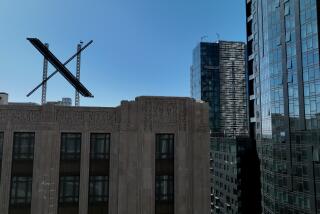San Francisco Doesn’t Savor Hodel’s Hetch Hetchy Proposal
Your Oct. 15 editorial “A Dream to Savor”--commenting on Secretary of the Interior Donald Hodel’s proposal to tear down San Francisco’s O’Shaughnessy Dam--failed to recognize San Francisco’s responsible stewardship of the Hetch Hetchy Valley in Yosemite National Park.
It took a great deal of vision, hard work, and indeed major technological innovations for San Francisco to build its Hetch Hetchy Water and Power System in the Sierra Nevada. And the idea of building a dam in a national park was controversial, but it was also thoroughly debated for years before being authorized by Congress.
Debate over the issue at that time focused on two differing points of view about management of our nation’s natural resources. John Muir felt that wherever possible, absolute wilderness should be preserved and remain relatively inaccessible. But other respected environmentalists argued that responsible management of our natural resources would allow preservation of natural wonders and constructive use of resources as well.
What has San Francisco done with Hetch Hetchy? We built a dam in a small valley with a floor area of about a mile square that was flooded in the spring and marshy and mosquito-infested in summer. The dam created a beautiful reservoir, and San Francisco built and maintains roads, trails, and campsites that provide hikers access to previously inaccessible areas.
While Hetch Hetchy is not as big or as grand as Yosemite Valley, it is beautiful, San Francisco’s stewardship retains its beauty and increases its accessibility--while providing one of the highest quality water supplies in the Western United States to more than 2 million people.
We also provide cheap, clean hydroelectric power. This power is used to move irrigation water in the Central Valley. It also powers many municipal needs in San Francisco, including transit vehicles which move hundreds of thousands of people each day to and from work without requiring them to use their automobiles. Finally, sale of surplus power provides San Francisco with funds to balance its budget in an era when property taxes are frozen in California, and both state and federal monies are rapidly diminishing.
Where does Hodel figure in this equation? He proposes to demolish a dam that generates hydroelectric power at the same time he proposes to allow offshore oil drilling off the coast of California. If our energy needs are so great as to risk drilling off our coast, then how can he justify demolishing a dam that generates the cleanest, cheapest source of power there is?
He suggests that he wants to reverse a bad precedent, building a dam in a national park. If he succeeds he will also reverse a good precedent: declaring the Tuolumne River a federal wild and scenic stream. San Francisco’s dams and powerhouses guarantee that the Tuolumne below O’Shaughnessy Dam retains sufficient flow in summer months to serve as a major trout fishery and one of the most outstanding white water streams in the United States.
If there is a single premise upon which Hodel’s boss, President Ronald Reagan, has built his political career, it is that governments should be entrepreneurial and run like businesses. And yet his secretary of the interior wishes to penalize San Francisco for practicing this.
Northern and Southern California share the great Sierra watershed--with some of its snow melt and rainfall going north, some south. If--ostensibly to restore the natural wonders of Hetch Hetchy--Hodel can stop a source of water and power guaranteed to millions of Northern Californians by an act of Congress in 1913, then--to restore the natural wonders of Mono Lake--he can take back the source of water and power Southern Californians now enjoy. Then, too, the Los Angeles Times might understand why San Francisco is not savoring Hodel’s dream.
DIANNE FEINSTEIN
Mayor of San Francisco
More to Read
Sign up for Essential California
The most important California stories and recommendations in your inbox every morning.
You may occasionally receive promotional content from the Los Angeles Times.










